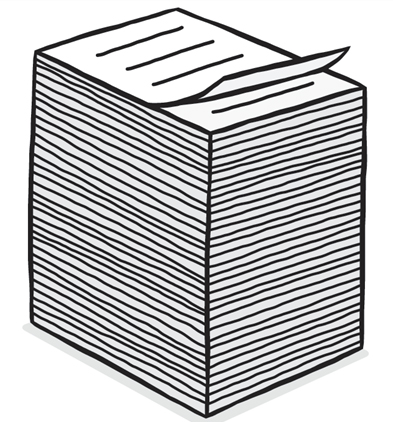Paper cuts through communication challenge
In Running Your Business
Follow this topic
Bookmark
Record learning outcomes
A simple paper-based system is helping pharmacists and GPs to share information about their patients.
 Better communication between health professionals is vital, says Neil Mistry, community pharmacist at Hutchins Chemist, Loughton, Essex. And it is an important area for future development for community pharmacy. €The most important thing that pharmacy needs to do moving forward is to be feeding information back to other healthcare professionals. Currently, we don't do that.€
Better communication between health professionals is vital, says Neil Mistry, community pharmacist at Hutchins Chemist, Loughton, Essex. And it is an important area for future development for community pharmacy. €The most important thing that pharmacy needs to do moving forward is to be feeding information back to other healthcare professionals. Currently, we don't do that.€
He describes one local process, developed jointly between local GPs and pharmacists, using a standardised form accessible on the PMR. This is completed in the pharmacy, printed out, and delivered to the surgery either by fax or by hand, allowing pharmacists to pass on key information that comes up in consultations. While those using the system would like it to be a digital process in the future, it's actually been working well on paper so far, says Mr Mistry.
Pharmacists fill out the paper form alongside the patient, outlining the relevant symptoms as well as the advice the pharmacist has given. The form is then passed on to the patient's GP and if necessary can be used as part of referral information passed further up the medical chain. €We came up with the system in partnership with a local GP surgery, so that if a problem couldn't be dealt with in the pharmacy the patient would be referred to their GP with the relevant paperwork to back that up,€ says Mr Mistry.
€The doctor can look at the form that has been filled in by the pharmacist, and can see what has been suggested to the patient so far. €The aim is that whenever a patient receiving medication comes into the pharmacy for advice it's logged and details of the questions they asked are taken, so that it's easier to spot what's wrong.€
The system has been in use since early 2013, and in that time the pharmacy has seen one case in particular that they believe demonstrates the impact this system could have. €A customer was having palpitations, so we needed to first decide whether or not to send her to A&E as an emergency. She was happy to talk about her condition and we already had some prior information.€
€We took her blood pressure, and, after assessing that it was OK, we gave the patient some breathing exercises to help to calm her down. When we were happy with her condition, we sent the patient home and I told her to call me at any point if she needed to. She was also advised that if she began to feel any worse she should dial 999 straightaway.€
Once a patient has left the pharmacy, one of the pharmacy team delivers the paperwork to the GP surgery, as part of a secure communication process. €The information with the blood pressure readings went to the GP practice and suggested that we should increase her blood pressure medication from 2.5mg to 5mg. When the patient attended her appointment with the GP, he already had that information on his desk. This is an advantage to patients as well.
€The patient was happy. She didn't have to make a trip to A&E and the GP could be briefed before he saw the patient. It makes the process more streamlined and every healthcare professional is able to know what the rest are doing. That's the essence of what we were trying to achieve with this project.€ Cost saving is at the heart of the project, with every avoided trip to A&E and GP surgeries meaning a saving to the NHS.
€If we saved a patient going to a GP we would save the NHS £48. If we prevented a trip to A&E we would save anything up to and over £1,042, depending on the resources used €“ based on the information shared by some pharmaceutical companies. I did some calculations, and if only 10 per cent of what I calculated was saved and if the NHS invested £500,000 in 100 pharmacies doing the same thing as us, then over a 12-month time period, the NHS could save that money plus an additional £125,000.€ Mr Mistry is keen to get the system online and to share it with others.
€The next step would be to get a digital version up and running, then there wouldn't be any need to pass paperwork because healthcare professionals would be able to log in securely and see the information for themselves.
